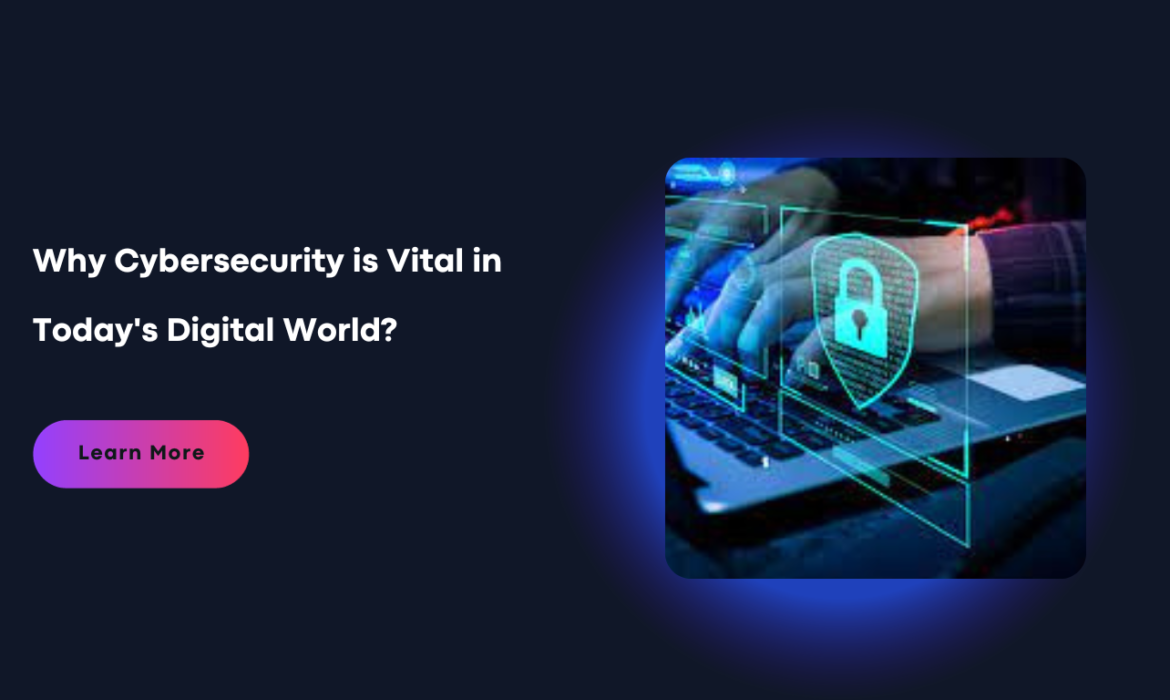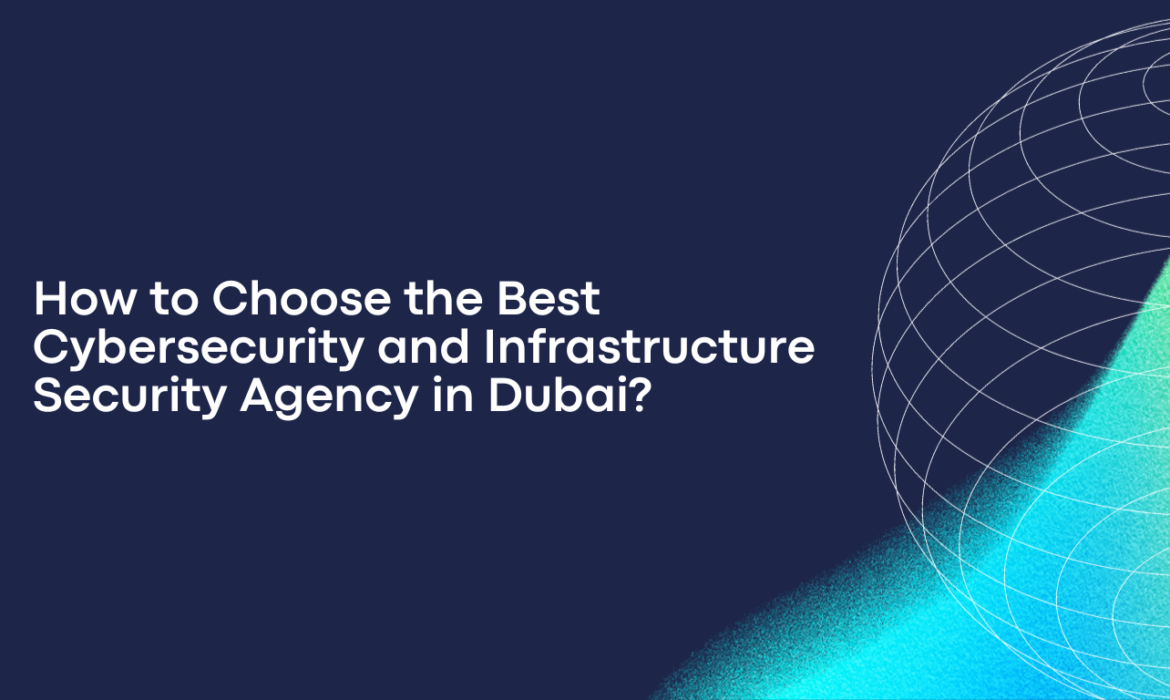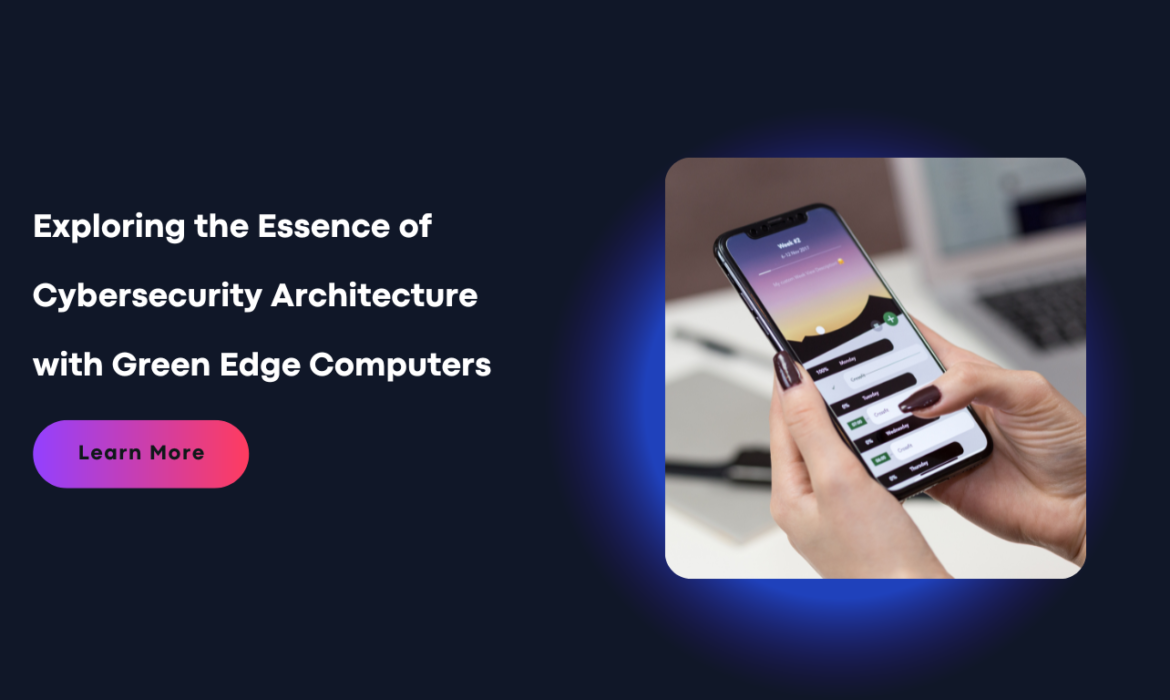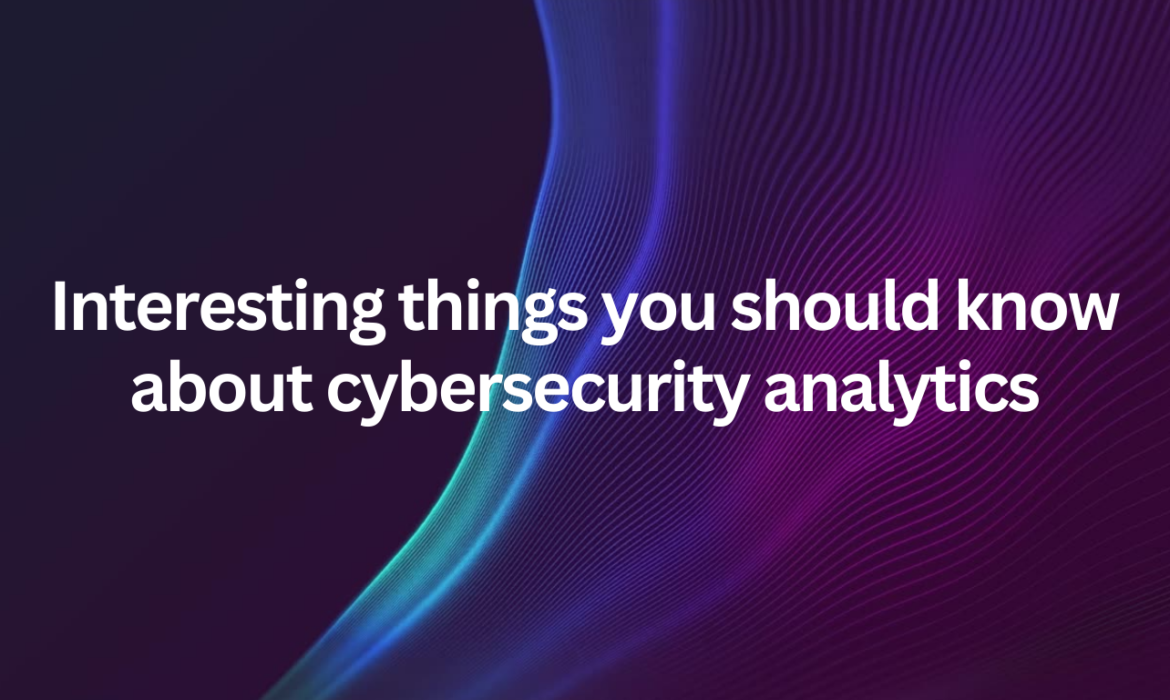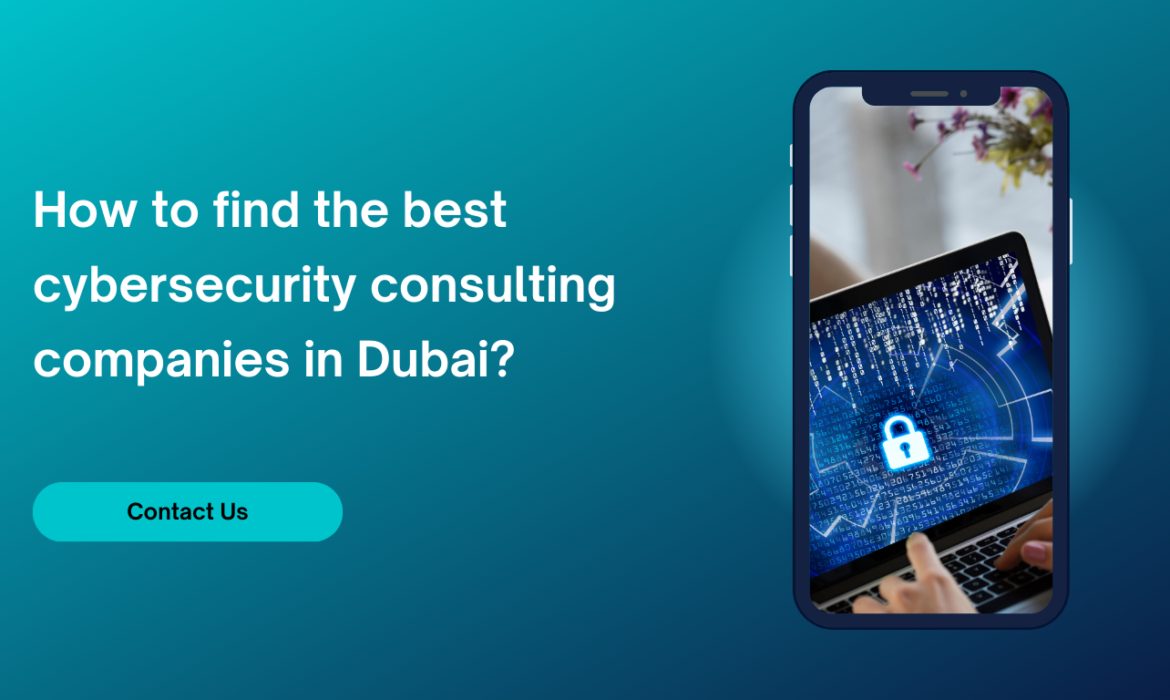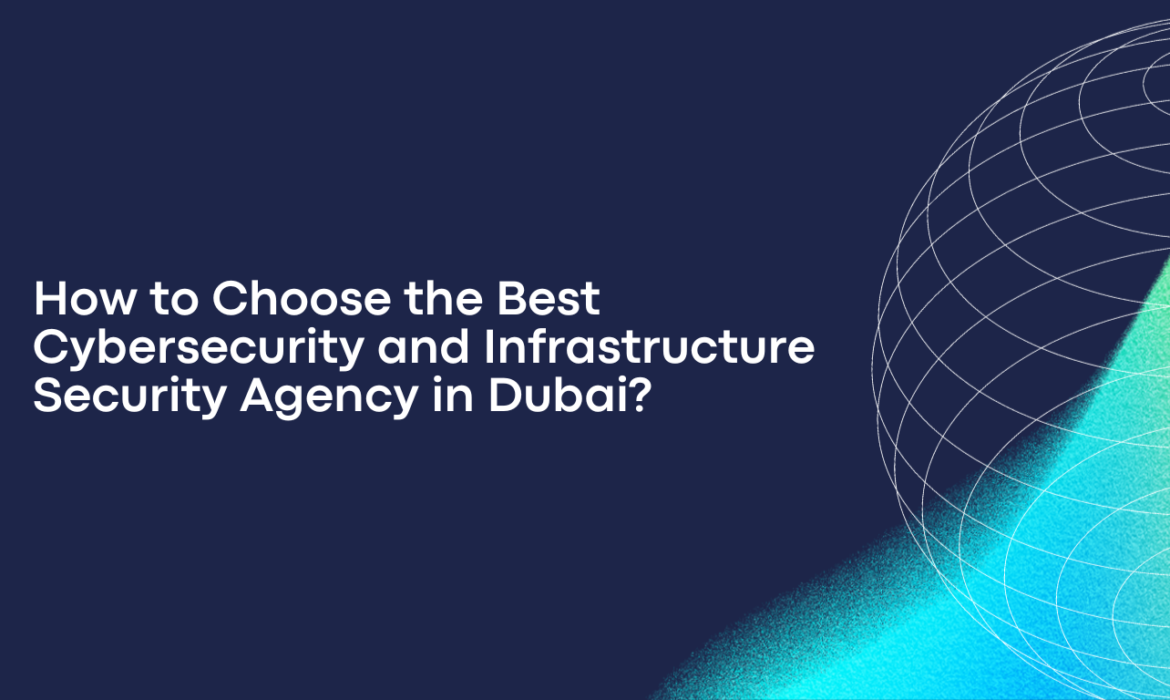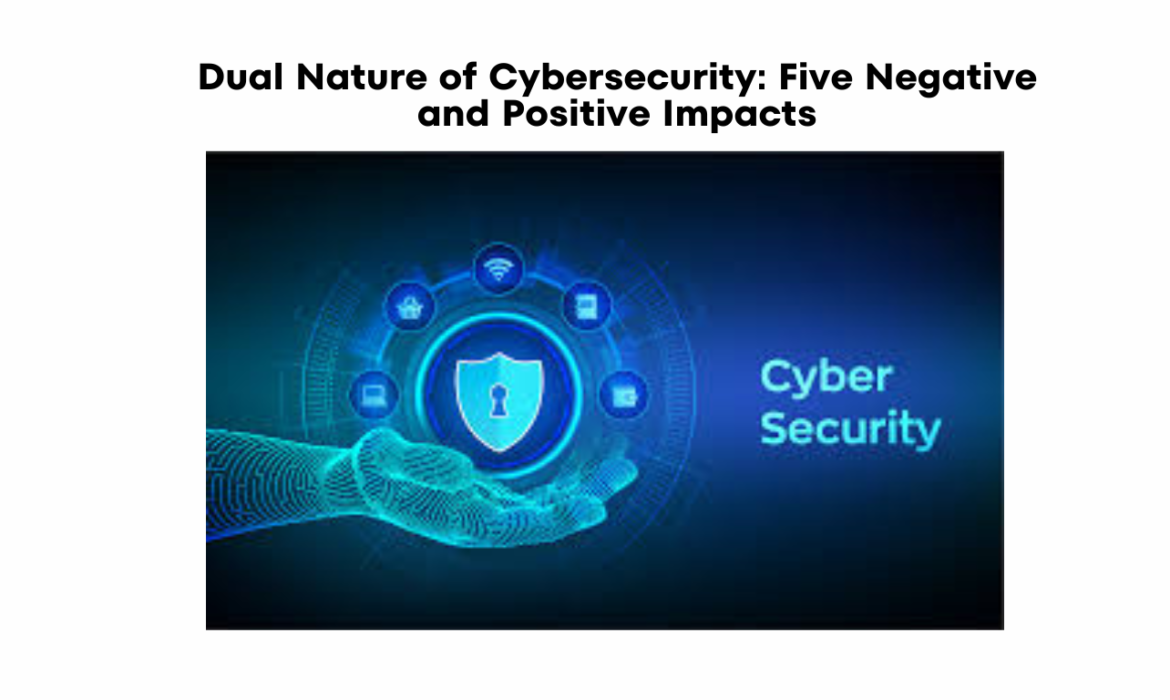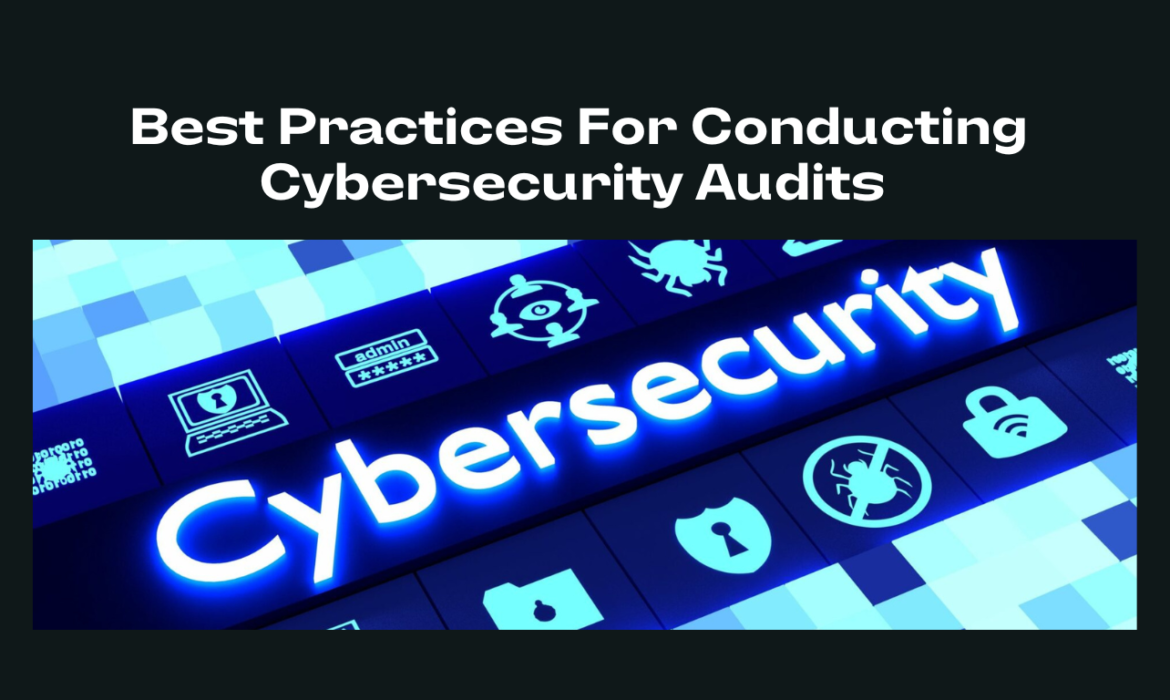Why Cybersecurity is Vital in Today’s Digital World?
In today’s hyper-connected world, where information flows freely and transactions happen online, the importance of cybersecurity cannot be overstated. From personal data to sensitive business information, every piece of data transmitted or stored on the internet is vulnerable to cyber threats. In this blog, we’ll explore why cybersecurity is crucial in safeguarding our digital lives and businesses, and why investing in it is a wise decision.
Protecting Personal Information
In an era of social media, online shopping, and digital banking, we share an unprecedented amount of personal information online. From our addresses and phone numbers to financial data and even our medical records, the internet holds a treasure trove of our private data. Cybersecurity measures, such as strong passwords, encryption, and multi-factor authentication, are essential to protect this sensitive information from falling into the wrong hands.
Safeguarding Financial Assets
Online banking and e-commerce have revolutionized the way we handle our finances. However, they have also created opportunities for cybercriminals to steal our money. Cyberattacks like phishing scams, ransomware, and identity theft can lead to significant financial losses. Implementing robust cybersecurity measures ensures that your financial assets remain secure and your transactions are safe from prying eyes.
Also Read: All you need to know about “Mimecast Log In”
Protecting Business Operations
For businesses, cybersecurity is not just an option; it’s a necessity. A cyberattack can cripple a company’s operations, disrupt its supply chain, and erode customer trust. Moreover, the financial ramifications of a data breach or cyberattack can be catastrophic. Investing in cybersecurity tools and training for employees is an investment in the longevity and success of your business.
Preserving Reputation and Trust
A data breach not only has immediate financial consequences but also damages a company’s reputation. Customers and clients lose trust in organizations that fail to protect their data. The long-term effects of a tarnished reputation can be even more devastating than the initial financial loss. Strong cybersecurity measures not only protect data but also preserve trust in your brand.
Complying with Regulations
As cyber threats continue to evolve, governments and regulatory bodies have imposed strict cybersecurity regulations to protect individuals and organizations. Failing to comply with these regulations can result in hefty fines and legal consequences. By prioritizing cybersecurity, you not only protect your data but also ensure that your business remains compliant with the law.
Also Read: Best Practices for IT Infrastructure Security Policies
Countering Evolving Threats
Cyber threats are constantly evolving, becoming more sophisticated and harder to detect. Hackers are continually finding new ways to exploit vulnerabilities. To stay ahead of these threats, organizations must invest in cybersecurity solutions that can adapt and evolve to counter emerging risks.
Ensuring Business Continuity
In the event of a cyberattack or data breach, the ability to quickly recover and resume operations is crucial. Cybersecurity measures, such as data backups and disaster recovery plans, are essential for ensuring business continuity. Without these safeguards, a cyber incident could lead to prolonged downtime and financial losses.
How Green Edge Computers can help?
We at Green Edge Computers have various cybersecurity solution for all kinds of businesses. You can choose the best fit for you.
End Point Security
Endpoint Protection
Sophos
Unified Endpoint Management
42Gears
SureMDM
SureFox
SureLock
Astro Contacts
Email Security
Spam Gateway
Mimecast
SpamTitan Gateway
Email Domain Protection
GoDMark
Video Kiosks
Network Security
Firewall
Sophos
Monitoring / Automation
Motadata
Data Security
Data Loss Prevention
Safetica Nxt
Safetica Data Discovery
Backup, Recovery + DR
Datto
Infrastructure Security
Privileged Access Management
Infrastructure Monitoring
Safetica One
Log Analytics Motadata
Service Desk Motadata
SSO – Pure ID
Conclusion
In conclusion, cybersecurity is not an option; it’s a fundamental requirement in our digital age. Whether you’re an individual protecting personal information or a business safeguarding sensitive data, the importance of cybersecurity cannot be overstated. Investing in robust cybersecurity measures is an investment in your safety, financial security, and the reputation of your brand. Don’t wait until it’s too late; prioritize cybersecurity today to protect what matters most. Contact us at Green Edge Computers to know more.
All you need to know about “Mimecast Log In”
Mimecast log in : Mimecast is a leading cybersecurity and email management company that provides cloud-based solutions to protect and manage email and other essential data. Mimecast offers various services to help organizations safeguard their email communications and data, and “Mimecast log in” refers to the process of logging into the Mimecast platform to access these services. Here’s everything you need to know about Mimecast login:
Mimecast log in Services:
Mimecast provides a range of services, including email security, archiving, continuity, and data protection. Users need to log in to access and manage these services.
Also Read: Best Practices for IT Infrastructure Security Policies
Mimecast User Account:
To log in to Mimecast, you must have a Mimecast user account. Typically, Mimecast services are used by organizations, so your IT department or Mimecast administrator will set up your account.
Mimecast Web Portal:
The primary way to access Mimecast services is through the Mimecast Web Portal, a secure online platform. To log in, you’ll need your username and password.
Mimecast Personal Portal:
Users can also access their Mimecast services and settings through the Mimecast Personal Portal, where they can configure their email security preferences, view quarantined messages, and more.
Also Read: Best Practices for IT Infrastructure Security Policies
Mimecast log in Mobile App:
Mimecast offers a mobile application for both Android and iOS devices, allowing users to access Mimecast services on the go. You can log in to the mobile app using your Mimecast credentials.
Logging In:
To log in to Mimecast, follow these general steps: a. Open your web browser and go to the Mimecast Web Portal or the Personal Portal URL. b. Enter your Mimecast username (usually your email address) and password. c. Complete any additional authentication steps if required, such as multi-factor authentication (MFA). d. Once authenticated, you’ll have access to your Mimecast services and settings.
Also Read: Interesting things you should know about cybersecurity analytics
Forgot Password:
If you forget your Mimecast password, you can typically use the “Forgot Password” or “Reset Password” link on the login page to reset it. You’ll receive instructions on how to create a new password.
Security:
Mimecast places a strong emphasis on security. They often implement multi-factor authentication to ensure that only authorized users can access their services.
Also Read: Enhancing Digital Safety With Effective Cybersecurity Solutions
Support:
Mimecast provides customer support to assist users with login issues, technical questions, and any other concerns related to their services.
Logging Out:
It’s essential to log out of your Mimecast session when you’re done to ensure the security of your account. Most Mimecast platforms have a “Log Out” option.
Remember that the specific steps and procedures for logging into Mimecast may vary depending on your organization’s configuration and security policies. If you encounter any issues or have questions about Mimecast login, it’s best to contact your organization’s IT department or Mimecast support for assistance.
Also Read: How to find the best cybersecurity consulting companies in Dubai?
Top benefits of using mimecast email cybersecurity
Mimecast is a well-regarded email cybersecurity and management solution provider, and using their services can offer numerous benefits for individuals and organizations looking to enhance their email security. Here are some of the top benefits of using Mimecast for email cybersecurity:
Threat Protection:
Mimecast provides robust protection against advanced email threats such as phishing attacks, ransomware, malware, and zero-day threats. Their solutions use advanced threat detection techniques to block malicious emails before they reach the inbox.
Spam Filtering:
Mimecast’s email security solutions include powerful spam filters that help reduce the clutter in your inbox and prevent unwanted emails from reaching you. This improves productivity and reduces the risk of falling for spam-related scams.
Also Read: How to Choose the Best Cybersecurity and Infrastructure Security Agency in Dubai?
Email Continuity:
Mimecast ensures that email communication remains uninterrupted even during server outages or downtime. It provides email continuity services, allowing users to access their emails from the Mimecast cloud in case of an email server failure.
Data Loss Prevention (DLP):
Mimecast offers DLP capabilities to prevent sensitive data from being leaked through email. It scans outgoing emails for sensitive content and can automatically block or encrypt messages containing confidential information.
Email Archiving:
Mimecast provides email archiving solutions that securely store emails and related data for compliance and e-discovery purposes. This ensures that organizations can easily retrieve and audit email communications when needed.
Centralized Management:
Mimecast offers a centralized management console that allows administrators to configure and monitor email security settings for the entire organization from one place, streamlining management tasks.
User Awareness Training:
Mimecast often includes security awareness training as part of its offerings. This educates users about the latest email security threats, phishing attacks, and best practices to avoid falling victim to cyberattacks.
Real-Time Reporting and Monitoring:
Mimecast provides real-time reporting and monitoring capabilities, allowing administrators to track email security incidents, view threat trends, and gain insights into the email traffic to make informed decisions.
Mobile Security:
Mimecast extends its security features to mobile devices, ensuring that emails accessed on smartphones and tablets are also protected against threats.
Scalability:
Mimecast’s solutions are scalable and can accommodate the needs of both small businesses and large enterprises. This scalability makes it a flexible choice for organizations of various sizes.
Compliance and Regulations:
Mimecast helps organizations meet compliance requirements, including those related to data protection and privacy regulations like GDPR and HIPAA, by providing features such as email archiving and data retention policies.
Phishing Simulation:
Mimecast often includes phishing simulation tools to help organizations train their employees to recognize phishing emails and respond appropriately.
Improved Productivity:
By reducing the time and effort spent dealing with spam, security threats, and email downtime, Mimecast helps improve overall productivity within an organization.
In today’s digital landscape, where email remains a primary communication tool and a common vector for cyberattacks, investing in robust email cybersecurity solutions like Mimecast can protect sensitive information, maintain business continuity, and enhance the overall security posture of an organization.
Best Practices for IT Infrastructure Security Policies
In today’s rapidly evolving digital landscape, securing your organization’s IT infrastructure is of paramount importance. With cyber threats becoming increasingly sophisticated, having robust security policies in place is not just a good practice, but a necessity. In this blog post, we will delve into some of the best practices for designing and implementing effective IT infrastructure security policies to safeguard your sensitive data, systems, and networks.
Risk Assessment and Analysis
Before crafting security policies, it’s crucial to conduct a comprehensive risk assessment and analysis. Identify the potential threats and vulnerabilities that your IT infrastructure might face. This assessment will help you prioritize your security efforts and tailor your policies to address the most critical risks.
Clear and Comprehensive Policies
Your security policies should be well-defined, clear, and comprehensive. They should cover all aspects of IT security, including access controls, data encryption, network security, device management, incident response, and more. Make sure that the policies are written in language that is easy to understand, avoiding technical jargon as much as possible.
Access Control and Authentication
Implement strict access controls and authentication mechanisms to ensure that only authorized personnel can access sensitive systems and data. Use strong and multi-factor authentication methods to add an extra layer of security.
Regular Updates and Patch Management
Best practices for it infrastructure security policies : Keep all software, applications, and systems up to date with the latest security patches. Regularly review and update your policies to reflect changes in technology and emerging threats. Outdated software can become a gateway for attackers, so staying current is essential.
Data Encryption
Encrypt sensitive data both in transit and at rest. Encryption provides an additional layer of protection even if unauthorized parties gain access to the data. Use strong encryption algorithms and key management practices to ensure the security of your data.
Employee Training and Awareness
Your security policies are only effective if your employees are aware of and adhere to them. Conduct regular training sessions to educate your staff about security best practices, common threats like phishing, and the importance of following the established policies.
Regular Audits and Assessments
Conduct regular security audits and assessments to evaluate the effectiveness of your policies. This will help you identify any gaps or areas that need improvement. Consider involving third-party security experts for unbiased evaluations.
Incident Response Plan
Create a well-defined incident response plan that outlines the steps to take in case of a security breach. This plan should include procedures for containing the breach, mitigating its impact, communicating with stakeholders, and learning from the incident to prevent future occurrences.
Mobile Device Management
With the proliferation of mobile devices, it’s crucial to have policies in place for managing and securing them. Implement Mobile Device Management (MDM) solutions to enforce security controls on employee-owned and company-owned devices.
Backup and Recovery
Regularly back up your critical data and systems and test the restoration process. This ensures that you can recover from a security incident or data loss with minimal disruption.
Conclusion
Effective and best practices for it infrastructure security policies are the foundation of a strong cybersecurity posture. By implementing these best practices, your organization can significantly reduce the risk of cyber threats and maintain the integrity and confidentiality of sensitive information. Remember that cybersecurity is an ongoing effort that requires continuous monitoring, adaptation, and improvement to stay ahead of emerging threats. Contact us at Green Edge Computers to know more.
FAQs related to Practices for IT Infrastructure Security Policies
1. What are IT infrastructure security policies?
IT infrastructure security policies are a set of guidelines, rules, and practices designed to protect an organization’s technology resources, data, and systems from potential threats and vulnerabilities.
2. Why are IT infrastructure security policies important?
IT infrastructure security policies are crucial for maintaining the confidentiality, integrity, and availability of sensitive data and systems. They help mitigate risks, prevent unauthorized access, and ensure compliance with industry regulations.
3. What should be included in an IT infrastructure security policy?
An IT infrastructure security policy should include details about access controls, data encryption, network security, incident response procedures, employee training, remote work guidelines, software updates, and more.
4. How do IT security policies impact compliance?
Effective IT security policies help organizations comply with industry regulations (like GDPR, HIPAA, etc.) by outlining security measures that protect sensitive data and systems. This compliance can prevent legal and financial repercussions.
5. How often should IT infrastructure security policies be reviewed?
IT security policies should be regularly reviewed and updated to account for emerging threats, changes in technology, and updates in industry regulations. An annual review is often recommended, but the frequency may vary based on organizational needs.
6. How can employees be trained to follow IT security policies?
Employee training is essential. Conduct regular security awareness programs to educate employees about best practices, social engineering threats, password management, and how to handle sensitive data.
7. What is the role of management in enforcing these policies?
Management plays a critical role in setting the tone for security culture. They need to lead by example, allocate resources for security measures, and ensure that policies are consistently enforced throughout the organization.
8. How do IT security policies address remote work scenarios?
Remote work policies should cover secure access to company resources, guidelines for using personal devices, secure communication practices, and the use of virtual private networks (VPNs) to protect data transmitted over public networks.
9. How can vendors and third-party partners align with these policies?
Vendors and third-party partners should be required to adhere to your organization’s security policies to ensure that their practices align with your security standards. This can be addressed through contractual agreements and regular security assessments.
Exploring the Essence of Cybersecurity Architecture with Green Edge Computers
In the dynamic landscape of today’s digital age, cybersecurity stands as a formidable shield against an ever-evolving array of threats. At the core of this defense lies the concept of cybersecurity architecture—a strategic approach that lays the foundation for robust protection and resilience. Join us as we delve into the intricate world of cybersecurity architecture, uncovering its significance, key components, and the pivotal role it plays in safeguarding our digital realm.
Understanding Cybersecurity Architecture: A Primer
Imagine a well-fortified castle, designed with intricate layers of walls, gates, and watchtowers to defend against attackers. Similarly, cybersecurity architecture serves as the blueprint for constructing a resilient digital fortress. It encompasses the design, layout, and integration of various security measures, technologies, and protocols to safeguard critical assets from cyber threats.
Key Components of Cybersecurity Architecture
- Network Security: Just as a castle’s moat prevents unauthorized access, network security establishes barriers to protect data and information as they traverse networks. Firewalls, intrusion detection systems (IDS), and intrusion prevention systems (IPS) play crucial roles in safeguarding against unauthorized access and malicious activities.
- Endpoint Security: Think of this as the guards patrolling the castle’s walls. Endpoint security focuses on securing individual devices such as computers, smartphones, and IoT devices. Antivirus software, encryption, and multi-factor authentication fortify these endpoints against breaches.
- Data Protection: Within the castle’s chambers lie treasures worth protecting. Data protection involves strategies like encryption, access controls, and data loss prevention mechanisms to ensure sensitive information remains confidential and unaltered.
- Application Security: Just as secret passages can be exploited by intruders, vulnerabilities in software applications can be exploited by cybercriminals. Application security involves secure coding practices, regular patching, and vulnerability assessments to prevent unauthorized access and data breaches.
- Identity and Access Management (IAM): Just as the castle allows only authorized personnel through its gates, IAM ensures that only authorized individuals can access digital resources. Role-based access control (RBAC) and single sign-on (SSO) mechanisms form the cornerstone of IAM.
The Role of Cybersecurity Architecture in Today’s Landscape
In an era where cyber threats have grown in scale and sophistication, a well-designed cybersecurity architecture is not a luxury but a necessity. It serves as the first line of defense against threats like malware, ransomware, phishing attacks, and more. A robust architecture not only prevents breaches but also enables rapid detection and response, minimizing potential damages.
The Evolving Landscape and Future Trends
As technology continues to advance, so do the strategies of cyber attackers. Consequently, cybersecurity architecture must remain adaptable. The rise of cloud computing, IoT, and AI brings new challenges and opportunities. Concepts like “zero trust” architecture, which operates on the assumption that no entity—whether internal or external—should be trusted by default, are gaining traction.
Conclusion
In conclusion, it is the bedrock on which a secure digital ecosystem is built. By encompassing network security, endpoint security, data protection, application security, and IAM, it creates a multi-layered defense mechanism against modern cyber threats. As the digital realm continues to expand, understanding and implementing robust cybersecurity architecture is paramount for individuals and organizations alike, ensuring a safer and more secure digital future. Contact us at GreenEdge Computers to get the best cybersecurity services.
FAQs for Cybersecurity Architecture
1. What is cybersecurity architecture?
It refers to the systematic design, integration, and implementation of security measures, protocols, and technologies to protect digital systems, networks, and data from cyber threats.
2. Why is cybersecurity architecture important?
It is crucial for creating a strong defense against evolving cyber threats. It provides a structured approach to safeguarding digital assets, ensuring data confidentiality, integrity, and availability.
3. What are the key components of cybersecurity architecture?
It’s key components includes network security, endpoint security, data protection, application security, and identity and access management (IAM). These components work together to create a comprehensive defense system.
4. How does it differ from other cybersecurity measures?
While cybersecurity measures include various tactics like firewalls and antivirus software, cybersecurity architecture focuses on the strategic design and integration of these measures. It’s about creating a holistic security framework tailored to an organization’s needs.
5. What is the “zero trust” architecture?
Zero trust architecture is a security concept that assumes no entity—whether inside or outside the organization’s perimeter—should be trusted by default. It requires continuous verification of identities and strict access controls, reducing the risk of unauthorized access.
6. How does cybersecurity architecture protect against data breaches?
By implementing strong access controls, encryption, and data loss prevention mechanisms, cybersecurity architecture prevents unauthorized users from gaining access to sensitive data. It also helps in detecting and responding to breaches swiftly.
7. How does cloud computing impact cybersecurity architecture?
Cloud computing introduces new challenges due to the shared and remote nature of data storage and processing. Cybersecurity architecture for the cloud involves securing data both in transit and at rest, along with ensuring robust authentication and authorization mechanisms.
8. What is the role of application security in cybersecurity architecture?
Application security involves securing software applications to prevent vulnerabilities that attackers can exploit. Application security measures, such as secure coding practices and regular software patching, are integral to a strong cybersecurity architecture.
9. How does cybersecurity architecture adapt to emerging technologies?
It needs to evolve alongside technological advancements. As technologies like IoT and AI become more prevalent, architects must design security measures that consider the unique risks associated with these technologies.
10. How can organizations implement an effective cybersecurity architecture?
Organizations should start by assessing their current security posture, identifying vulnerabilities, and defining their security requirements. Then, they can design a comprehensive architecture that integrates various security components and ensures regular monitoring and updates.
Interesting things you should know about cybersecurity analytics
“Cybersecurity analytics” refers to the practice of using data analysis techniques to identify, assess, and respond to security threats and incidents in digital systems, networks, and applications. It involves collecting, processing, and analyzing various types of data to gain insights into potential security risks and to improve an organization’s overall security posture. We being one of the best cybersecurity companies in Dubai are here with some interesting things to know about cybersecurity analytics:
Data Variety and Sources:
Cybersecurity deals with diverse data sources, including logs from network devices, security appliances, user activities, application behaviors, and more. These data sources collectively provide a comprehensive view of an organization’s digital environment.
Threat Detection:
One of the primary goals of cybersecurity is to detect and prevent cyber threats. By analyzing patterns and anomalies in network traffic, user behavior, and system activities, security teams can identify suspicious activities that might indicate a potential breach or attack.
Also Read: Enhancing Digital Safety With Effective Cybersecurity Solutions
Machine Learning and AI:
Machine learning and artificial intelligence play a crucial role in cybersecurity analytics. These technologies can automate the process of identifying abnormal behaviors, recognize new and evolving threats, and help security systems adapt to changing attack methods.
Behavioral Analysis:
Cybersecurity focuses on behavioral analysis, which involves understanding normal patterns of behavior within an organization’s digital systems. Deviations from these patterns can indicate unauthorized access or other security breaches.
Also Read: How to find the best cybersecurity consulting companies in Dubai?
SIEM (Security Information and Event Management):
SIEM tools are commonly used in cybersecurity analytics. These platforms collect and correlate data from various sources, allowing security teams to monitor and respond to security events in real-time.
Threat Intelligence:
Cybersecurity analytics incorporates threat intelligence feeds, which provide information about emerging threats, vulnerabilities, and attacker tactics. Integrating threat intelligence into analytics processes enhances an organization’s ability to proactively defend against threats.
Incident Response:
Cybersecurity assists in incident response by providing actionable insights during and after a security incident. Analysts can investigate the root cause of the incident, assess the extent of the breach, and develop strategies to mitigate and recover from the attack.
Risk Assessment:
Analytics helps organizations assess their risk posture by identifying weak points in their digital infrastructure and determining potential vulnerabilities that attackers could exploit.
Also Read: How to Choose the Best Cybersecurity and Infrastructure Security Agency in Dubai?
User and Entity Behavior Analytics (UEBA):
UEBA focuses on analyzing the behaviors of users and entities (such as applications, and devices) within an organization’s network. This approach can identify insider threats and compromised accounts by detecting unusual or anomalous activities.
Visualization and Reporting:
Data visualization techniques are often used in cybersecurity to present complex security data in a comprehensible manner. Visualizations help security teams quickly grasp the state of their systems and make informed decisions.
Compliance and Regulation:
Many industries are subject to cybersecurity regulations and compliance requirements. Cybersecurity analytics aids organizations in meeting these standards by providing insights into their security posture and demonstrating adherence to security best practices.
Continuous Improvement:
Cybersecurity analytics is an ongoing process. It involves continuously refining and enhancing analytical models based on the latest threat intelligence and evolving attack techniques.
Overall, cybersecurity is a dynamic and vital aspect of modern cybersecurity practices. It enables organizations to proactively defend against cyber threats, respond effectively to incidents, and make informed decisions to protect their digital assets and sensitive information. Want to know more things about cybersecurity? Contact us at Green Edge Computers to know more.
FAQs:
What is cybersecurity analytics?
Cybersecurity is the practice of using data analysis techniques to identify, assess, and respond to security threats and incidents in digital systems, networks, and applications.
Why is cybersecurity analytics important?
Cybersecurity helps organizations detect and prevent cyber threats by analyzing patterns and anomalies in data, enabling proactive defense and quicker incident response.
What types of data are used in cybersecurity analytics?
Various types of data are used, including network logs, user activities, application behaviors, threat intelligence feeds, and more, to gain insights into potential security risks.
How does machine learning contribute to cybersecurity?
Machine learning helps automate threat detection by learning from historical data and identifying abnormal behaviors or patterns that might indicate a security breach.
What is SIEM, and how does it relate to cybersecurity analytics?
SIEM (Security Information and Event Management) tools collect and correlate security data from different sources to provide real-time monitoring, alerting, and incident response capabilities.
Enhancing Digital Safety With Effective Cybersecurity Solutions
In an era where the digital landscape reigns supreme, the importance of robust cybersecurity solutions cannot be overstated. As businesses, governments, and individuals continue to rely heavily on interconnected systems, the vulnerability to cyber threats has grown exponentially. The keyword “cybersecurity solutions” encapsulates a vast realm of strategies, technologies, and practices that fortify our digital existence. In this blog post, we delve into the significance of cybersecurity solutions and highlight some of the most effective approaches in safeguarding our virtual realm.
Understanding the Cybersecurity Landscape:
The rapid advancement of technology has brought forth unparalleled convenience, but it’s accompanied by an array of challenges. Cybercriminals, armed with sophisticated techniques, exploit vulnerabilities in networks, software, and human behavior to steal sensitive data, disrupt services, and cause chaos. This necessitates a multi-faceted approach to cybersecurity that combines proactive measures, real-time monitoring, and swift response mechanisms.
Key Cybersecurity Solutions:
- Firewalls and Intrusion Detection Systems (IDS): These act as the first line of defense by monitoring incoming and outgoing network traffic. Firewalls regulate data flow, while IDS identifies unusual or malicious activities and alerts administrators.
- Encryption: The use of encryption technology ensures that data remains confidential even if intercepted by unauthorized parties. This is particularly crucial during data transmission.
- Multi-Factor Authentication (MFA): MFA adds an extra layer of security by requiring users to provide multiple forms of verification before granting access. This prevents unauthorized access, even if passwords are compromised.
- Regular Software Updates and Patch Management: Keeping software and systems updated with the latest security patches helps close known vulnerabilities that cybercriminals often exploit.
- Security Awareness Training: Human error is a significant contributor to cyber incidents. Educating employees and individuals about best practices, phishing attacks, and social engineering tactics can mitigate risks.
- Endpoint Security: With the proliferation of devices, securing endpoints (devices like laptops, smartphones, etc.) is critical. Endpoint security solutions protect these devices from malware, unauthorized access, and data breaches.
- Cloud Security: As cloud computing becomes integral, dedicated security measures for cloud environments are essential. Cloud security solutions protect data stored in and transmitted through cloud services.
- Behavioral Analytics: This involves monitoring user behavior and system activities to detect anomalies. It helps in identifying insider threats and advanced persistent threats that might evade traditional security measures.
- Incident Response Plans: Having a well-defined plan for responding to cyber incidents minimizes damage and recovery time. It outlines the steps to be taken when a breach occurs.
- Artificial Intelligence (AI) and Machine Learning (ML): These technologies play a significant role in identifying patterns, anomalies, and potential threats in large datasets, enabling quicker and more accurate threat detection.
The Future of Cybersecurity:
As technology continues to evolve, so do cyber threats. The future of cybersecurity solutions lies in the integration of AI, ML, and automation, which can provide real-time threat analysis and predictive insights. Quantum cryptography holds promise for unbreakable encryption, while decentralized systems like blockchain enhance data integrity.
Moreover, the global nature of the digital landscape necessitates international cooperation and regulation to combat cross-border cybercrime effectively. Privacy concerns also need to be balanced with security measures, respecting individuals’ rights while ensuring their safety. Contact us at Green Edge Computers to get a free consultation call from the cybersecurity experts.
Conclusion:
In a world interconnected by technology, the quest for foolproof cybersecurity solutions is an ongoing endeavor. The keyword “cybersecurity solutions” encompasses a vast array of tools, techniques, and practices designed to safeguard our digital lives. From firewalls to AI-driven analytics, each solution plays a vital role in creating a layered defense against cyber threats. As we forge ahead, embracing innovative technologies and fostering a culture of cyber awareness will be paramount in maintaining the integrity of our digital ecosystem. Remember, in the realm of cybersecurity, proactive measures today can save us from potential catastrophe tomorrow.
Frequently Asked Questions (FAQs) about Cybersecurity Solutions
1. What are cybersecurity solutions?
Cybersecurity solutions encompass a range of technologies, strategies, and practices designed to protect digital systems, networks, and data from cyber threats, attacks, and unauthorized access.
2. Why are cybersecurity solutions important?
In our increasingly digital world, cyber threats are constantly evolving and pose significant risks to individuals, businesses, and governments. Effective cybersecurity solutions are vital to safeguard sensitive information, prevent disruptions, and maintain trust in digital interactions.
3. What are some common types of cybersecurity solutions?
Common cybersecurity solutions include firewalls, antivirus software, intrusion detection systems (IDS), encryption tools, multi-factor authentication (MFA), security awareness training, and behavioral analytics.
4. How does encryption contribute to cybersecurity solutions?
Encryption transforms data into unreadable formats using cryptographic algorithms. It ensures that even if intercepted, the data remains confidential. Encryption is crucial for protecting sensitive information during storage and transmission.
5. What is multi-factor authentication (MFA) in cybersecurity solutions?
Multi-factor authentication requires users to provide multiple forms of verification (such as a password, fingerprint, or text message code) before gaining access to a system or application. MFA adds an extra layer of security beyond just a password.
6. How do cybersecurity solutions address insider threats?
Cybersecurity solutions that focus on behavioral analytics and monitoring can detect unusual activities and behaviors, which might indicate insider threats. These solutions help organizations identify and mitigate risks originating from within the organization.
7. How do artificial intelligence (AI) and machine learning (ML) contribute to cybersecurity solutions?
AI and ML technologies analyze large volumes of data to identify patterns and anomalies that might indicate cyber threats. They can enhance threat detection accuracy and speed by adapting to new attack techniques.
8. What is the role of cybersecurity solutions in cloud computing?
Cloud security solutions protect data and applications hosted in cloud environments. These solutions include data encryption, access controls, and monitoring to ensure the security of cloud-based resources.
9. How can businesses ensure the effectiveness of their cybersecurity solutions?
Effective cybersecurity requires a holistic approach. Businesses should regularly update software, conduct vulnerability assessments, provide employee training, monitor network traffic, and have an incident response plan in place.
10. How can individuals contribute to cybersecurity solutions?
Individuals can enhance their own cybersecurity by using strong, unique passwords, enabling two-factor authentication (2FA), being cautious of phishing emails, keeping software updated, and staying informed about current cyber threats.
11. Are there industry regulations related to cybersecurity?
Yes, many industries have regulations and standards related to cybersecurity. For example, the General Data Protection Regulation (GDPR) in the EU and the Health Insurance Portability and Accountability Act (HIPAA) in the US mandate data protection practices in specific sectors.
12. How are emerging technologies shaping the future of cybersecurity solutions?
Emerging technologies like quantum cryptography and blockchain are poised to revolutionize cybersecurity. Quantum cryptography offers unbreakable encryption, while blockchain enhances data integrity and transparency in transactions.
13. What’s the relationship between cybersecurity solutions and privacy concerns?
While cybersecurity solutions are crucial for protecting data, they must be implemented with a consideration for privacy. Striking a balance between security measures and individuals’ rights to privacy is essential.
14. How can international collaboration improve cybersecurity solutions?
Cyber threats often transcend borders, making international cooperation essential. Sharing threat intelligence, collaborating on cybersecurity research, and establishing global norms can collectively strengthen cybersecurity efforts.
15. Why is a proactive approach crucial in cybersecurity solutions?
The threat landscape is constantly evolving, with new vulnerabilities and attack techniques emerging regularly. Proactive measures, such as regular updates, security audits, and employee training, help organizations stay ahead of potential threats.
Remember that the field of cybersecurity is dynamic, and staying informed about the latest developments and best practices is essential for maintaining robust digital security.
How to find the best cybersecurity consulting companies in Dubai?
Are you looking for the best cybersecurity consulting company? Cybersecurity is critically important in today’s digital age due to the increasing reliance on technology, interconnected systems, and the vast amount of sensitive data stored and transmitted online. To find the best cybersecurity consulting companies in Dubai, you can follow these steps:
Online Search Engines:
Use search engines like Google to start your search. Enter keywords like “best cybersecurity consulting companies in Dubai” or “top cyber security firms in Dubai.” The results will likely include lists, reviews, and articles about the top companies in the field.
Business Directories:
Explore local business directories specific to Dubai or the UAE. Examples include Dubai Chamber of Commerce, Yellow Pages UAE, and Dubai Business Directory. These directories often provide a list of businesses along with their contact details and sometimes even user reviews.
Industry Reports and Rankings:
Look for industry reports, surveys, and rankings that highlight the best cybersecurity companies in Dubai. Magazines, research firms, and websites related to technology and business often publish such reports.
Professional Networks:
Join online professional networks such as LinkedIn and search for cybersecurity professionals in Dubai. You can also join relevant groups and forums to ask for recommendations from people who have experience in the field.
Attend Cybersecurity Events:
Check if there are any cybersecurity conferences, workshops, or events happening in Dubai. These events are a great opportunity to connect with experts in the industry and learn about reputable companies.
Consultancy Associations:
Check if Dubai has any associations or organizations related to cybersecurity or IT consulting. These associations might provide a list of their member companies, which could be a good starting point.
Client Reviews and Testimonials:
If you come across potential companies, look for client reviews and testimonials on their websites or on third-party review platforms. This can provide insights into their reputation and the quality of their services.
Evaluate Services:
Once you’ve found a list of potential companies, visit their websites to learn more about their services, expertise, and client portfolio. Look for companies that offer the specific cybersecurity services that align with your needs.
Contact Shortlisted Companies:
Reach out to the companies on your shortlist. Ask for more information about their services, experience, and client references. This will give you a better understanding of their capabilities and how well they can address your cybersecurity needs.
Compare and Choose:
Compare the information you’ve gathered about each company, including their services, experience, reputation, and client feedback. Choose the company that best aligns with your requirements and budget.
Why cybersecurity consulting is important?
Cybersecurity consulting is important for several reasons, as it provides specialized expertise and support in managing and mitigating the complex and evolving landscape of cyber threats. Here’s why cybersecurity consulting is crucial:
Expertise and Knowledge:
Cybersecurity consultants are experts in their field, staying up-to-date with the latest threats, vulnerabilities, and best practices. Their specialized knowledge allows them to offer insights and solutions that might not be readily available to in-house teams.
Risk Assessment and Management:
Consultants can conduct thorough risk assessments to identify vulnerabilities and potential weaknesses in an organization’s IT infrastructure. They help prioritize risks and develop strategies to manage and mitigate them effectively.
Tailored Solutions:
Every organization’s cybersecurity needs are unique. Cybersecurity consultants can design customized solutions that align with an organization’s specific requirements, taking into account industry regulations, business goals, and budget constraints.
Objective Evaluation:
An external consultant provides an unbiased assessment of an organization’s cybersecurity posture. This objectivity helps identify blind spots and areas for improvement that internal teams might overlook due to familiarity or bias.
Resource Efficiency:
Building an in-house cybersecurity team can be resource-intensive in terms of recruitment, training, and ongoing skill development. Hiring a consulting firm provides access to a team of experts without the overhead costs associated with full-time employees.
Cost-Effectiveness:
Engaging a cybersecurity consulting firm can be cost-effective, especially for smaller organizations that might not have the budget to maintain a dedicated cybersecurity team. It allows organizations to leverage expertise on an as-needed basis.
Response to Emerging Threats:
Cyber threats evolve rapidly. Consultants are equipped to respond to emerging threats quickly, adapting strategies and tools to address new attack vectors and vulnerabilities.
Compliance and Regulations:
Many industries are subject to strict data protection and cybersecurity regulations. Consultants help ensure compliance with these regulations, minimizing legal and regulatory risks.
Incident Response Planning:
In the event of a cybersecurity breach, consultants can assist in developing and implementing incident response plans. Their expertise helps mitigate damage, minimize downtime, and communicate effectively with stakeholders.
Training and Awareness:
Consultants often offer employee training and awareness programs to educate staff about cybersecurity best practices. This helps create a security-conscious culture within the organization.
Why choose Green Edge Computers as a cybersecurity consulting company?
GreenEdge Computers is one of the best cybersecurity companies in Dubai. We have customised cybersecurity solutions for all kinds of businesses. Remember that finding the best cybersecurity consulting company involves thorough research and evaluation.
Services we offer:
Cybersecurity is a critical aspect of any business, so take your time to ensure you’re partnering with a reputable and trustworthy firm. Contact us now to know more.
How to Choose the Best Cybersecurity and Infrastructure Security Agency in Dubai?
In today’s digital landscape, where cyber threats are becoming increasingly sophisticated and prevalent, ensuring the security of your organization’s sensitive data and infrastructure is of paramount importance. Cybersecurity breaches can lead to significant financial losses, reputational damage, and legal consequences. As a result, selecting the right cybersecurity and infrastructure security agency has never been more critical. In this comprehensive guide, we will delve into the key factors to consider when choosing the best partner to safeguard your digital assets.
1. Understand Your Needs:
Before embarking on your search for the ideal cybersecurity agency, it’s crucial to assess your organization’s unique security requirements. Determine the scope of protection you need for your networks, systems, applications, and data. Are you looking for a comprehensive cybersecurity solution or specific services such as vulnerability assessment, penetration testing, or incident response? Identifying your needs will help you narrow down your options and find an agency that aligns with your goals.
2. Expertise and Experience:
When it comes to cybersecurity, experience matters. Look for agencies with a proven track record of successfully mitigating cyber threats and assisting organizations in enhancing their security posture. Research their clientele, case studies, and testimonials to gauge their proficiency. A team of certified professionals with a diverse skill set and up-to-date knowledge of emerging threats is a strong indicator of a reliable agency.
3. Range of Services:
Cybersecurity is a multidimensional field encompassing various aspects such as network security, endpoint protection, data encryption, threat intelligence, and more. A top-tier agency should offer a wide range of services to address different layers of security. This comprehensive approach ensures that all potential vulnerabilities are identified and fortified.
4. Customized Solutions:
Avoid a one-size-fits-all approach. The best cybersecurity agency will take the time to understand your organization’s unique challenges, industry regulations, and technology stack. Tailored solutions that are designed to align with your business objectives and adapt to your evolving needs will provide the most effective protection.
5. Industry Reputation and Reviews:
Research the agency’s reputation within the industry. Seek out reviews and ratings from their past and current clients. Additionally, inquire whether the agency has been recognized by reputable industry organizations or has received any awards for its contributions to the field. A strong industry reputation is a solid indicator of their reliability and expertise.
6. Proactive Approach:
In the rapidly evolving landscape of cybersecurity, a proactive approach is crucial. Look for agencies that not only respond to incidents but also provide ongoing monitoring, threat hunting, and vulnerability management. The ability to identify and address potential threats before they escalate can make a significant difference in preventing breaches.
7. Clear Communication:
Effective communication is essential for a successful partnership. The agency should be able to explain complex technical concepts in a way that is easily understandable for non-technical stakeholders. Regular updates, progress reports, and transparent communication regarding any incidents or potential risks are hallmarks of a trustworthy agency.
8. Compliance and Regulations:
Depending on your industry, your organization might be subject to specific cybersecurity regulations and compliance standards. Ensure that the agency you choose is well-versed in these regulations and can help you maintain compliance while fortifying your security measures.
9. Scalability:
As your organization grows, so will your cybersecurity needs. Choose an agency that can scale its services to accommodate your changing requirements. A partner that can grow alongside your business will save you the hassle of repeatedly searching for new security solutions.
10. Cost-Effectiveness:
While cybersecurity is an investment, it’s essential to find an agency that offers value for your money. Compare pricing structures and service packages from different agencies. Remember that the cheapest option may not necessarily provide the best protection, so prioritize quality and expertise over cost alone.
Conclusion
In conclusion, choosing the best cybersecurity and infrastructure security agency is a critical decision that requires careful consideration. By understanding your needs, evaluating expertise, considering a range of services, and prioritizing proactive approaches, you can find a partner that will effectively safeguard your digital assets. Don’t rush the decision-making process; take the time to research, compare, and select an agency that aligns with your organization’s security goals. With the right cybersecurity partner by your side, you can navigate the digital landscape with confidence and resilience. Contact us at Green Edge Computers to get services by the best Cybersecurity and Infrastructure Security Agency
Dual Nature of Cybersecurity: Five Negative and Positive Impacts
List five negative and positive impacts of cybersecurity : In the rapidly evolving digital landscape, where information flows freely across the virtual realm, cybersecurity has emerged as a paramount concern. As technology continues to shape our lives, both positively and negatively, the impacts of cybersecurity measures cannot be underestimated. Let’s delve into five negative and five positive impacts of cybersecurity.
Negative Impacts:
- False Sense of Security: One of the major pitfalls of cybersecurity is the potential for cultivating a false sense of security. As organizations and individuals adopt robust cybersecurity measures, they might begin to believe that they are impervious to cyber threats. This complacency can lead to a lack of vigilance and preparedness, making them susceptible to novel attack vectors.
- Economic Costs: While investing in cybersecurity is essential, it can also be financially burdensome. Companies, especially smaller ones, might struggle to allocate sufficient funds to implement comprehensive security measures. The costs associated with hiring experts, acquiring cutting-edge tools, and continuous monitoring can strain budgets and hamper growth.
- Privacy Concerns: In the quest to enhance cybersecurity, there’s a potential for overreach that infringes upon individuals’ privacy. Stringent security measures can lead to data collection and surveillance practices that raise ethical and legal concerns. Balancing security needs with individual privacy rights is a delicate challenge.
- Technological Complexity: The rapid evolution of cybersecurity technologies can lead to a highly complex landscape. Organizations often struggle to keep up with the constant updates and changes in security protocols. This complexity might inadvertently introduce vulnerabilities due to misconfigurations or inadequate understanding of the technology.
- Skill Shortage: The demand for skilled cybersecurity professionals far outweighs the supply. This skill shortage makes it difficult for organizations to find and retain qualified experts to manage their security systems. As a result, some systems might be inadequately protected, leaving them vulnerable to cyberattacks.
Positive Impacts:
- Data Protection: Cybersecurity plays a pivotal role in safeguarding sensitive data from unauthorized access. Strong encryption, access controls, and authentication mechanisms ensure that only authorized personnel can access critical information. This protection builds trust among clients and partners, facilitating healthy business relationships.
- Innovation Facilitation: A robust cybersecurity framework encourages innovation by providing a secure environment for research and development. When companies are confident that their intellectual property and trade secrets are well-protected, they are more likely to invest in groundbreaking technological advancements.
- Global Connectivity: The interconnectedness of the modern world hinges on secure communication channels. Cybersecurity enables individuals to engage in online transactions, share information, and collaborate across geographical boundaries without the fear of cyber threats. This connectivity fosters economic growth and cultural exchange.
- Evolving Workforce: The field of cybersecurity offers a multitude of career opportunities. As the need for cybersecurity experts grows, it creates jobs that cater to diverse skill sets, from ethical hacking to risk assessment. This dynamic workforce drives innovation within the cybersecurity industry itself.
- Critical Infrastructure Protection: Our critical infrastructure, including energy grids, transportation systems, and healthcare facilities, heavily relies on digital technology. Effective cybersecurity measures ensure the uninterrupted operation of these systems, preventing potentially catastrophic disruptions that could impact societies at large.
Conclusion
List five negative and positive impacts of cybersecurity : In conclusion, cybersecurity is a double-edged sword that wields both positive and negative impacts. It was the list five negative and positive impacts of cybersecurity . While it shields us from cyber threats and propels innovation, it can also lead to complacency, economic strain, and privacy concerns. Striking a balance between stringent security measures and preserving individual rights is crucial in reaping the benefits of cybersecurity without succumbing to its pitfalls. As technology continues to advance, the role of cybersecurity will only become more significant, underscoring the importance of understanding and managing its complex effects. Contact us at Greenedge Computers to know more.
Best Practices For Conducting Cybersecurity Audits
In today’s rapidly evolving digital landscape, cybersecurity has become a critical concern for organizations of all sizes and industries. As cyber threats continue to advance in sophistication, organizations must be prepared to defend their digital assets even amid crises. Conducting cybersecurity audits during such times is essential to ensure that security measures remain effective and vulnerabilities are promptly addressed. In this blog, we’ll explore the best practices for conducting cybersecurity audits in crises to help your organization stay resilient and secure.
Establish Clear Objectives
Before initiating a cybersecurity audit, it’s crucial to define clear objectives that align with the crisis at hand. Whether the crisis involves a sudden influx of remote work, a data breach, or a significant disruption to normal operations, your audit goals should be tailored to address the specific challenges posed by the crisis. This could involve identifying potential security gaps introduced by remote work setups or evaluating the impact of the crisis on existing security protocols.
Form a Cross-Functional Team
Conducting a cybersecurity audit during a crisis requires a collaborative effort involving individuals from various departments, including IT, security, legal, and communications. This cross-functional team brings diverse perspectives to the audit process and ensures that all aspects of the crisis and its potential impact on security are considered. Effective communication within the team is key to aligning strategies and sharing insights throughout the audit.
Prioritize Critical Assets
Not all assets are created equal in terms of their value to the organization. During a crisis, it’s essential to prioritize critical assets, such as sensitive customer data, intellectual property, and key infrastructure. Focus your audit efforts on evaluating the security measures protecting these assets, identifying potential vulnerabilities, and implementing immediate safeguards if necessary.
Assess Remote Work Security
Crises often lead to an increased reliance on remote work setups. As such, your cybersecurity audit should include a thorough assessment of the security measures in place for remote employees. This could involve reviewing the security configurations of remote access tools, ensuring the use of multi-factor authentication, and providing guidance to employees on secure remote work practices.
Review Incident Response Plans
A crisis can also trigger cyberattacks and breaches. Review your organization’s incident response plans and ensure they are up-to-date and adaptable to the current crisis. Test the response plans with various scenarios to identify potential gaps, and make necessary adjustments to effectively address any security incidents that may arise.
Stay Updated on Emerging Threats
Crises can create opportunities for cybercriminals to exploit vulnerabilities. Stay informed about the latest cybersecurity threats and tactics relevant to the crisis. Regularly update your team on emerging threats and adjust your audit focus accordingly. Being proactive in anticipating potential risks can significantly enhance your organization’s security posture.
Communicate Transparently
During a crisis, open and transparent communication is essential, both internally and externally. Keep all stakeholders informed about the cybersecurity audit process, its objectives, and any findings. If security vulnerabilities are discovered, communicate the steps being taken to mitigate them and reassure stakeholders that the organization is actively addressing the situation.
Document Findings and Remediation Steps
Thorough documentation is a cornerstone of effective cybersecurity audits. Document all audit findings, including identified vulnerabilities, their potential impact, and recommended remediation steps. This documentation serves as a valuable reference for future audits and helps ensure that no crucial steps are missed in addressing security concerns.
Continuous Monitoring and Adaptation
Cybersecurity is an ongoing effort, and crises can accelerate the need for adaptation. Establish a process for continuous monitoring and assessment of the security landscape. Regularly revisit your audit findings and ensure that the implemented security measures remain effective as the crisis evolves.
Learn and Improve
After the crisis subsides and the audit is complete, take the time to conduct a post-audit review. Identify lessons learned and areas where the audit process could be improved for future crises. This commitment to learning and improvement ensures that your organization becomes more resilient and better equipped to handle cybersecurity challenges in the future.
Conclusion
Conducting cybersecurity audits in crises is an essential practice to safeguard your organization’s digital assets and maintain operational continuity. By establishing clear objectives, forming cross-functional teams, and prioritizing critical assets, you can effectively navigate through the challenges posed by the crisis while maintaining a robust cybersecurity posture. Remember, in times of crisis, proactive and strategic cybersecurity measures can make all the difference in keeping your organization secure. Contact us at Green Edge Computers to know more.

